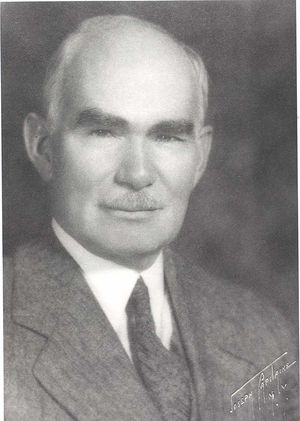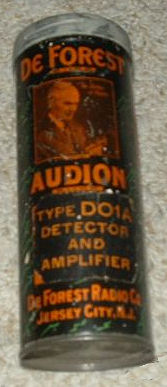De Forest Audion: Difference between revisions
From ETHW
No edit summary |
m (Text replace - "[[Category:Computers and information processing" to "[[Category:Computing and electronics") |
||
| (5 intermediate revisions by 2 users not shown) | |||
| Line 1: | Line 1: | ||
'''''This article is a stub. You can help the GHN by expanding it.''''' | <p>'''''This article is a stub. You can help the GHN by expanding it.''''' </p> | ||
[[Image:1095 De Forest Protrait, copyright IEEE.jpg|thumb|left|Lee De Forest]] [[Image:Audion.jpg|thumb|right|Audion]] | |||
[[Category: | <p>United States. On 25 October 1906 [[Lee De Forest|Lee de Forest]] submitted a patent application on a "Device for amplifying feeble electrical currents", which included the first form of the 3-electrode Audion. The device and its later improvements became the standard, allowing for inexpensive amplification of wireless voice signals among other amplification uses. It remained in widespread use until replaced by the transistor. </p> | ||
[[Category: | |||
{{DEFAULTSORT:Audion}} | |||
[[Category:Computing and electronics]] | |||
[[Category:Electron_devices]] | |||
[[Category:Vacuum_technology]] | |||
Revision as of 15:57, 22 July 2014
This article is a stub. You can help the GHN by expanding it.
United States. On 25 October 1906 Lee de Forest submitted a patent application on a "Device for amplifying feeble electrical currents", which included the first form of the 3-electrode Audion. The device and its later improvements became the standard, allowing for inexpensive amplification of wireless voice signals among other amplification uses. It remained in widespread use until replaced by the transistor.

